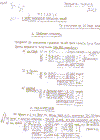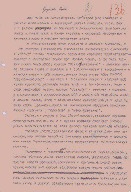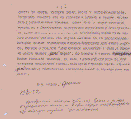
In November 1927, Joseph Stalin launched his "revolution from above" by setting two extraordinary goals for Soviet domestic policy: rapid industrialization and collectivization of agriculture. His aims were to erase all traces of the capitalism that had entered under the New Economic Policy and to transform the Soviet Union as quickly as possible, without regard to cost, into an industrialized and completely socialist state.
Stalin's First Five-Year Plan, adopted by the party in 1928, called for rapid industrialization of the economy, with an emphasis on heavy industry. It set goals that were unrealistic-- a 250 percent increase in overall industrial development and a 330 percent expansion in heavy industry alone. All industry and services were nationalized, managers were given predetermined output quotas by central planners, and trade unions were converted into mechanisms for increasing worker productivity. Many new industrial centers were developed, particularly in the Ural Mountains, and thousands of new plants were built throughout the country. But because Stalin insisted on unrealistic production targets, serious problems soon arose. With the greatest share of investment put into heavy industry, widespread shortages of consumer goods occurred.
The First Five-Year Plan also called for transforming Soviet agriculture from predominantly individual farms into a system of large state collective farms. The Communist regime believed that collectivization would improve agricultural productivity and would produce grain reserves sufficiently large to feed the growing urban labor force. The anticipated surplus was to pay for industrialization. Collectivization was further expected to free many peasants for industrial work in the cities and to enable the party to extend its political dominance over the remaining peasantry.
Stalin focused particular hostility on the wealthier peasants, or kulaks. About one million kulak households (some five million people) were deported and never heard from again. Forced collectivization of the remaining peasants, which was often fiercely resisted, resulted in a disastrous disruption of agricultural productivity and a catastrophic famine in 1932-33. Although the First Five-Year Plan called for the collectivization of only twenty percent of peasant households, by 1940 approximately ninety-sevenpercent of all peasant households had been collectivized and private ownership of property almost entirely eliminated. Forced collectivization helped achieve Stalin's goal of rapid industrialization, but the human costs were incalculable.
The next 1932 letter documents in great detail the devastating effects of collectivization in the Novosibirsk area of Siberia. An accompanying physician's report describes the deleterious medical conditions the famine has produced. This document is among the first detailed descriptions of the collectivization and its results in Siberia.

 Letter of April 9,
1932, from Feigin to Ordzhonikidze (a close friend
of Stalin's), about conditions on the kolkhozes (collective farms), and
Letter of April 9,
1932, from Feigin to Ordzhonikidze (a close friend
of Stalin's), about conditions on the kolkhozes (collective farms), and

 Dr. Kiselev's memorandum of March 25, 1932, about those conditions.
Dr. Kiselev's memorandum of March 25, 1932, about those conditions.
The next document is an order from Lenin to communists in Penza, August 11, 1918, demanding that they publicly hang at least 100 kulaks and confiscate their grain, to set an example.

Please follow the guided tour or have a look at one of these showcases:
When you have seen them all you should walk back to the entrance hall.